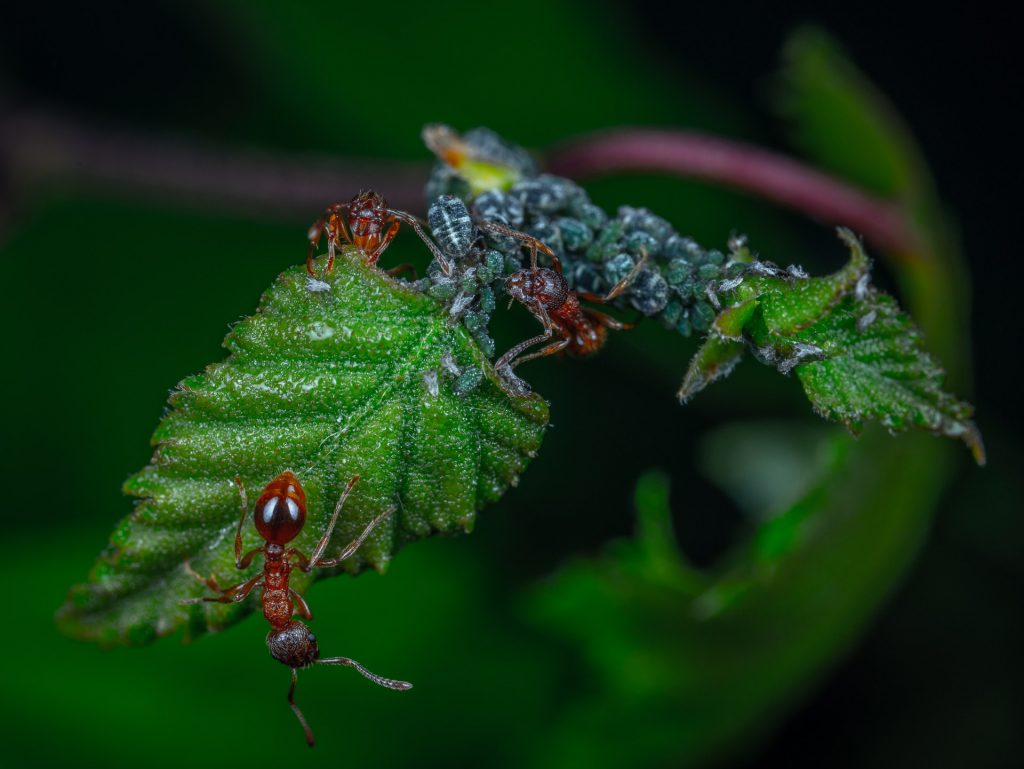How would you react if a double-tail suddenly came crawling over your foot? For example, the double tail has a fantastic task as a pest controller in our orchards. A single double-tail insect can eat thousands of aphids during its lifetime [1]. In other words, it is a crucial small lurk that comes crawling.
In this post, we will tell you more about small insects that eat pests and weeds, which thereby help to reduce the need for pesticides.
THE FUTURE OF PLANT PROTECTION

Did you know that the use of chemical pesticides worldwide has increased sevenfold in the last 40 years? [2]. Despite this development, the damage to crops has not decreased! How come? One possible explanation is that the effectiveness of numerous agents diminishes as pests build resistance, necessitating an increasingly potent and more significant quantity of pesticides. As knowledge increases about the negative impact of chemicals on humans and ecosystems, interest in alternative pest and weed control methods is growing. One process expected to become increasingly common is using living organisms instead of chemicals, so-called biological control [3].
SMALL INSECTS AS PEST CONTROL – HOW DOES IT WORK?
Almost all pests have natural enemies. Take aphids as an example. Many small insects like to eat aphids, such as ants, wasps, and flower flies. Ladybugs and green lacewing (green little insects with net-like wings) are so effective aphid fighters that they are put out in greenhouses to fight lice.


Some insects eat weed seeds and thus prevent many weeds from growing. And then there are omnivores, such as earthworms. Tiger beetles are giant, fast beetles that eat both pests and weeds. As the name suggests, they are good at running and can move quickly far into the fields. Arachnids are also omnivores and common pesticides on our farms.

A parasite that kills its host animal is called a parasitoid. A typical parasitoid group is the parasitic stingrays, which use a tube to lay eggs inside the pests. The larvae eat the host animal from within when the eggs hatch, eventually dying. It may sound unpleasant, but by regulating the presence of insects, they keep nature in balance. Parasitic pests are important in controlling pests because many parasitic pests attack all kinds of problems together. Almost all insects have developed stings for parasitic purposes.
FIGHTING PESTS WITH HELP FROM INSECTS HAS PROVEN TO WORK VERY EFFECTIVELY
In experiments where we exclude farm animals from farms with the help of barriers, it has been possible to demonstrate their great importance for the harvests. Research indicates that allowing natural predators like farm animals unrestricted access to grain-growing fields in springtime can reduce oat aphid-induced crop losses by 40–75% [4].

The cotton plant is susceptible to pest infestation, and cotton crops are known to be particularly chemical intensive. A common pest in cotton crops is larvae of butterfly species related to Helicoverpa. Widespread and increased chemical resistance problems have made biological control more attractive for some cotton growers.
In Australia, a major cotton producer, some state websites provide information on various natural enemies of the cotton bollworm (helicoverpa armigera) that we can use for biological control [5].
ASSIST THE NATURAL ENEMIES!
Unfortunately, these natural pesticides have difficulty living in today’s sprayed agricultural landscape. The high use of chemicals kills pests and weeds and the beneficial insects that eat the pests.
For the valuable animals to thrive and function as effective fighters, it is not enough to stop spraying the fields. It is also crucial that small insects have access to housing, protection, and food all year round in order for the populations to stay significant. If there are areas with dense vegetation and different types of flowers in connection with the agricultural fields, many insects and arachnids can thrive. When the small insects have access to wintering grounds, they can more easily get into the fields early in the season, as they are most useful as a fighter!
CLEAR SIGNS OF GROWTH IN THE POPULATION OF CERTAIN SMALL INSECTS!

Developments in this area are being driven forward, partly due to stricter legislation on plant and insect chemicals. Choosing organic in the store also contributes to biological pesticides becoming more popular.
A couple of years ago, the government decided to simplify the approval of insects and arachnids as pesticides to stimulate increased use of biological control. Nineteen species have been approved for use, including the lacewings and golden-eyed dragonfly [6]. Does it not ring a bell when you hear the names of these species? In a few years, they may have become celebrities in agricultural Sweden!
WHAT CAN WE DO TO HELP PEST CONTROLLERS?
- Choose organic. Remember that you, as a consumer, are part of the development towards a chemical-free pest control!
- If you have a garden, avoid using chemical pesticides; they kill not only the pests but also the pesticides. Make sure to grow plants and trees at different times of the year so pest controllers can find food and hiding places throughout the season.
References
- Bug Squad – The Incredible Aphid-Eating Machines
- National Library of Medecine – Pesticides Use and Exposure Extensive Worldwide
- Swedish University of Agricultural Sciences – Biological control of pests is the plant protection of the future
- Swedish University of Agricultural Sciences – Biodiversity and conservation biological control with insects and arachnids
- Queensland Government – Cereals, legumes, fibre crops and sugarcane
- Europe.eu – Sweden’s National Action Plan for the sustainable use of plant protection products for the period 2019–2022



